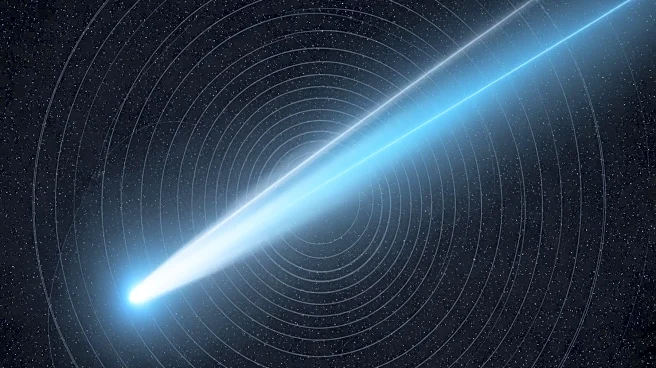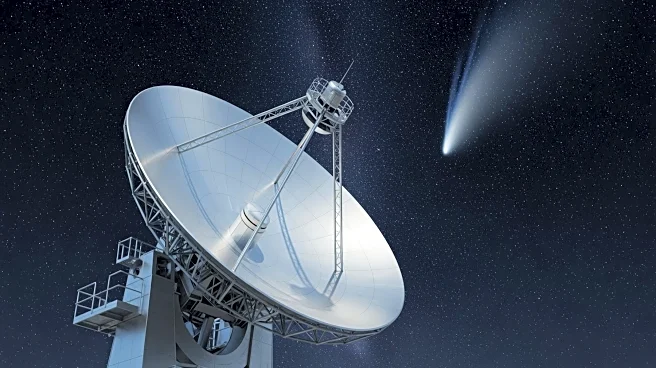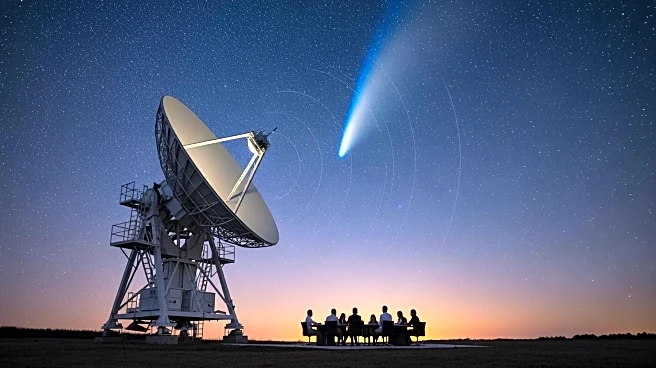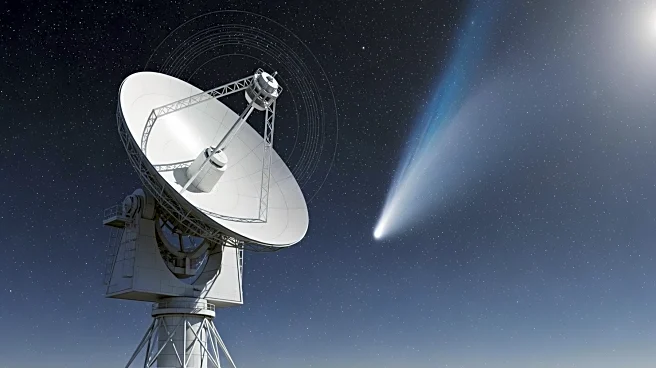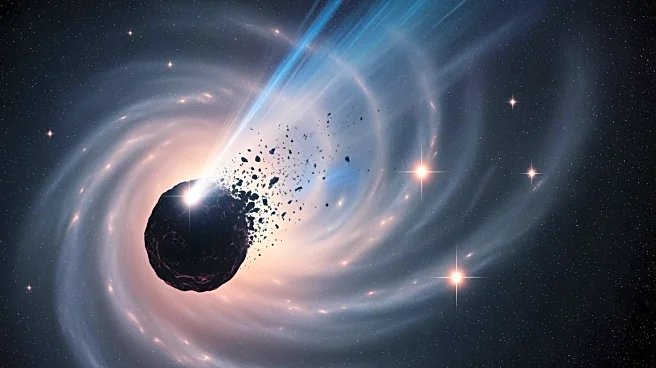What's Happening?
The interstellar comet 3I/ATLAS continues to intrigue astronomers as new observations confirm its natural cometary behavior. Recent analyses have verified that the comet's radio signal, detected by South
Africa's MeerKAT radio array, is due to hydroxyl produced by sunlight breaking up water from the comet, a typical cometary process. Images from the Nordic Optical Telescope show the comet's ion tail growing and an anti-tail pointing sunward, consistent with natural comet physics. Meanwhile, a different comet, C/2025 K1 (ATLAS), discovered by the same survey, is fragmenting, highlighting the dynamic nature of cometary bodies.
Why It's Important?
The confirmation of 3I/ATLAS's natural behavior is significant as it dispels speculation about its potential artificial origin. Understanding the characteristics of interstellar comets like 3I/ATLAS provides valuable insights into the composition and behavior of objects from outside our solar system. This knowledge can enhance our understanding of planetary formation and the distribution of materials in the universe. The study of interstellar comets also contributes to the broader field of astronomy by offering a rare opportunity to compare extraterrestrial materials with those found in our solar system.
What's Next?
Astronomers will continue to monitor 3I/ATLAS as it moves through the solar system, using ground-based and space-based telescopes to gather more data. ESA's JUICE spacecraft is attempting coordinated observations throughout November, with data expected in early 2026. The comet's trajectory will be tracked to study its interaction with solar wind and its impact on the comet's tail structure. These observations will help refine models of cometary behavior and contribute to the ongoing study of interstellar objects.
Beyond the Headlines
The study of 3I/ATLAS also highlights the importance of international collaboration in astronomy. Observations from various telescopes and research institutions around the world are crucial for building a comprehensive understanding of interstellar comets. This collaborative approach not only advances scientific knowledge but also fosters global cooperation in the pursuit of understanding the universe.


